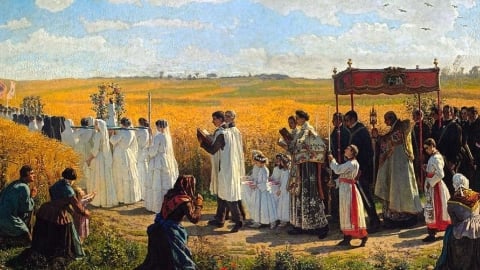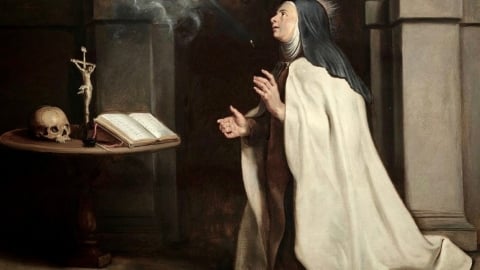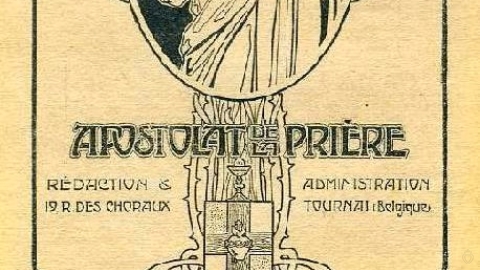Ignatian Year - St. Ignatius as Retreat-Master

St. Ignatius began the apostolate of the Exercises at Manresa, after the great revelation of the River Cardoner. By that time, the book of the Exercises must have been composed in its fundamental outline.
1. His Exercitants
He gave the Exercises wherever he went: Manresa, Barcelona, Álcala, Paris, Azpeitia, Venice, Rome. At first, in his own country, he used to give the retreat to simple folk and pious women. Later on, in Paris, he followed an entirely new way: he rather concentrated on professors, doctors and students of the university of Paris. Peralta, Juan de Castro, Dr Valle, Dr Marcel Gouvea, Alvaro Moscoso (the Rector of the University and later a theologian at Trent and Bishop of Pamplona), are some of the men who made the retreat, under Ignatius’s guidance. In Venice, and especially in Rome, Ignatius takes, so to say, a middle course. He expands his spiritual activity to embrace a wider circle than at Paris and yet remains very selective.
2. Phases in His Method
To the difference of retreatants corresponds also a variation in the method of giving the Exercises. The popular type predominates in the first stage. This has been described by Ignatius in the 18th annotation. We are fairly well informed about the manner in which he used to give the popular exercises, thanks to the ecclesiastical processes of Álcala. Those exercises were not as “light” as one might think they were. The women who followed the exercises had to attend Ignatius’s exhortations for a full month, several days each week and, so it seems, several times a day. He spoke about the powers of the soul, the articles of Faith, the precepts of the Church, the merit that might be obtained through temptation, the ten commandments, mortal and venial sin, examination of conscience, the third method of prayer, weekly Confession and frequent Communion. The Gospels also afforded him subject-matter for instruction, and he used to quote from them, and from St Paul, to clarify his doctrine. His manner of speaking was conversational, plain, and had nothing of the oratorical way. Another characteristic trait of this type of retreat was his intimate contact with the retreatants’ souls. Ignatius aimed at forming a deeply Christian conscience in the simple folk who came to him, with a minimum of consideration and a maximum of instruction. Still these exercises were not disconnected practices: for there is a central ideal informing them all, namely, the service of God. This is the basic idea of Ignatius’s teaching as it was the norm that ruled his own life. The practice of God’s service did not imply any radical transformation in the external tenor of the lives of those simple folk; they had to strive in all earnestness to fulfil faithfully all their obligations as Christians.
Contrasted with this more general type of retreat is the thorough and intensive one he preferred in later years, and which he gave in particular to his first companions in Paris. In this also the exercises lasted a full month; but they were given in a secluded place, and all the annotations and additions were scrupulously observed. Again, the idea of God’s service is foremost in all the meditations and inspires all the resolutions of the exercitants. Yet in Paris, unlike Manresa and Álcala, this idea leads to, and in fact brings about, a radical external transformation, in many a new state of life. And in these cases, we witness an application of one of St Ignatius’s chief tenets regarding the Exercises: the necessity of a proper preparation before one is allowed to make a full retreat. He used a simple form of Exercises as a means of preparation for further work. So, it took him four years of gradual work before he gave the full retreat to Bl. Peter Faber. The fruit this preparatory work yields in the case of Faber is substantially the same as that gathered by the pious women in Alcala: peace of the soul and strength to lead a fervent life. As a result of that initial work —which was already a retreat— Faber acquired a deep knowledge of self, a sharp psychological introspection and a greater firmness of will power. But Ignatius did not take four years’ preparation with everyone of his retreatants. Still, as far as. circumstances allowed it, he used to personally prepare the prospective exercitant and help him acquire the necessary dispositions of soul that would make him fit for the full retreat.
3. Different Ends aimed at
At first Ignatius wanted the Exercises to be like the leaven which should transform the people spiritually. This is why he chose a method of popularization, which, if duly applied, should bring about the reform of the family and of society through individuals. In Paris Ignatius used the Exercises to recruit companions for his own way of life. In Venice and in Rome the Exercises had another function, which went a step further. It became necessary to show clearly to influential prelates of the Curia of what manner of spirit he and his companion were: Ignatius thought there was no better way to accomplish this than by giving them the Exercises, where they could see the nature of his mission and the purpose of his life and apostolate, all directed toward a universal Catholic restoration. It was enough for them to penetrate into the spirit of the Exercises to realize the greatness of the new work Ignatius wanted to launch in support of the Catholic reformation.
From 1539 on, there is a gradual change in the personal objective Ignatius had when giving the Exercises. He is now interested in training directors. Instead of directing the exercitants he concentrates on forming retreat-masters.
4. His Qualities
St Ignatius was a model retreat-master, not only because the Exercises were the expression of his own soul’s experiences, but also because of his superlative personal qualities. In the first place a halo of sanctity, fruit of the Exercises, surrounded his whole person; hence his superiority over other people and the attraction which drew to him so many souls. In the natural order we must mention his singular prudence and tact in dealing with all classes of people and his skill in communicating to others his own conviction about the power of the Exercises. Add to these his resourceful mind, quick to adapt itself to varying temperaments and dispositions, and you have a striking set of reasons that made Ignatius the eminent director.
Condensed from Ignacio Iparraguirre S.J., Practica de los Ejercicios de San Ignacio de Loyola en vida de su Autor (1522-1556). Rome 1946. Chapter I, 1: Expansion efectuada por San Ignacio, pp. 1-13.





